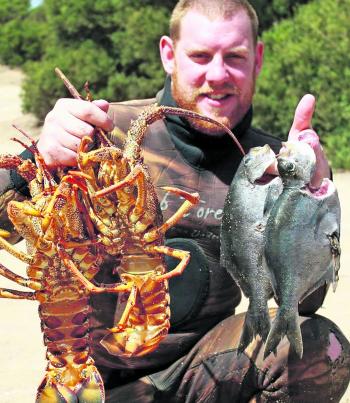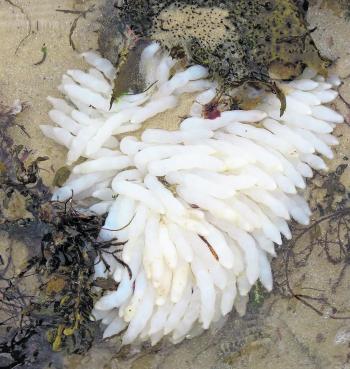Spring is in the air and September sees the beginning of warmer temperatures and some great spearfishing opportunities.
Male rock lobster begin their closed season from the 15 September, and females have been off limits since 1 June to protect them during their peak spawning period. The opening of the season is 15 November and the focus of most spearos turns to the plethora of other species on offer across our coastline during this period of closure.
Port Phillip Bay is the premier location to hunt southern calamari during September, with a build up in numbers as they breed and lay their eggs. Shallow weed beds are the ideal place to begin searching by looking for the tell-tale clusters of white eggs attached to weed. Once these areas are located, introducing some berley will not only draw the outlying squid into the zone, but will also distract them while the diver approaches for a shot.
The bag limit of 10 calamari is extremely generous, but with a fast growth rate and short lifecycle this limit seems sustainable, although it is always prudent to keep your catch to only what you require for your immediate needs.
Other species that are prevalent during the last of winter and into early spring include silver trevally, Australian salmon, sea sweep, snook and King George whiting, the latter three being top class eating. All these fish frequent shallow inshore waters that border reef structure, particularly around weedy areas adjacent to sand holes. The edges of turbulent water where the ocean stirs up plenty of food predated on by the aforementioned species are also prime areas to berley and hunt in.
In the far South West of the state, there is also the opportunity to chase the last of the southern bluefin tuna run. The last few years have seen school tuna push in close, as they seem to do at the start of the season as well. The North Shore at Portland as well as off Port Fairy have both produced some great late season bluewater hunting.
As always, the tuna are best located by finding birds that are diving on the baitfish being pushed up by the fish beneath. Moving in quietly, then introducing a steady stream of berley like pilchards is the key to holding the tuna near the boat. Divers are then able to enter the water without spooking the fish too much. Often the tuna will go down but then come back up on the berley, allowing for a shot on the feeding and distracted fish.
As always this form of offshore bluewater diving needs to be done with safety foremost. Flying an alpha flag (blue and white) off a float as well as the boat is a necessity to alert other boats and anglers to the fact that divers are in the water. A boat handler keeping close to the divers and watching out for other approaching boats or a diver in distress is also a good backup.
Reads: 2967
Mick Maheny with a nice feed of sea sweep and lobster.

Southern calamari eggs attached to weed are a great indication that you are in the right area.




